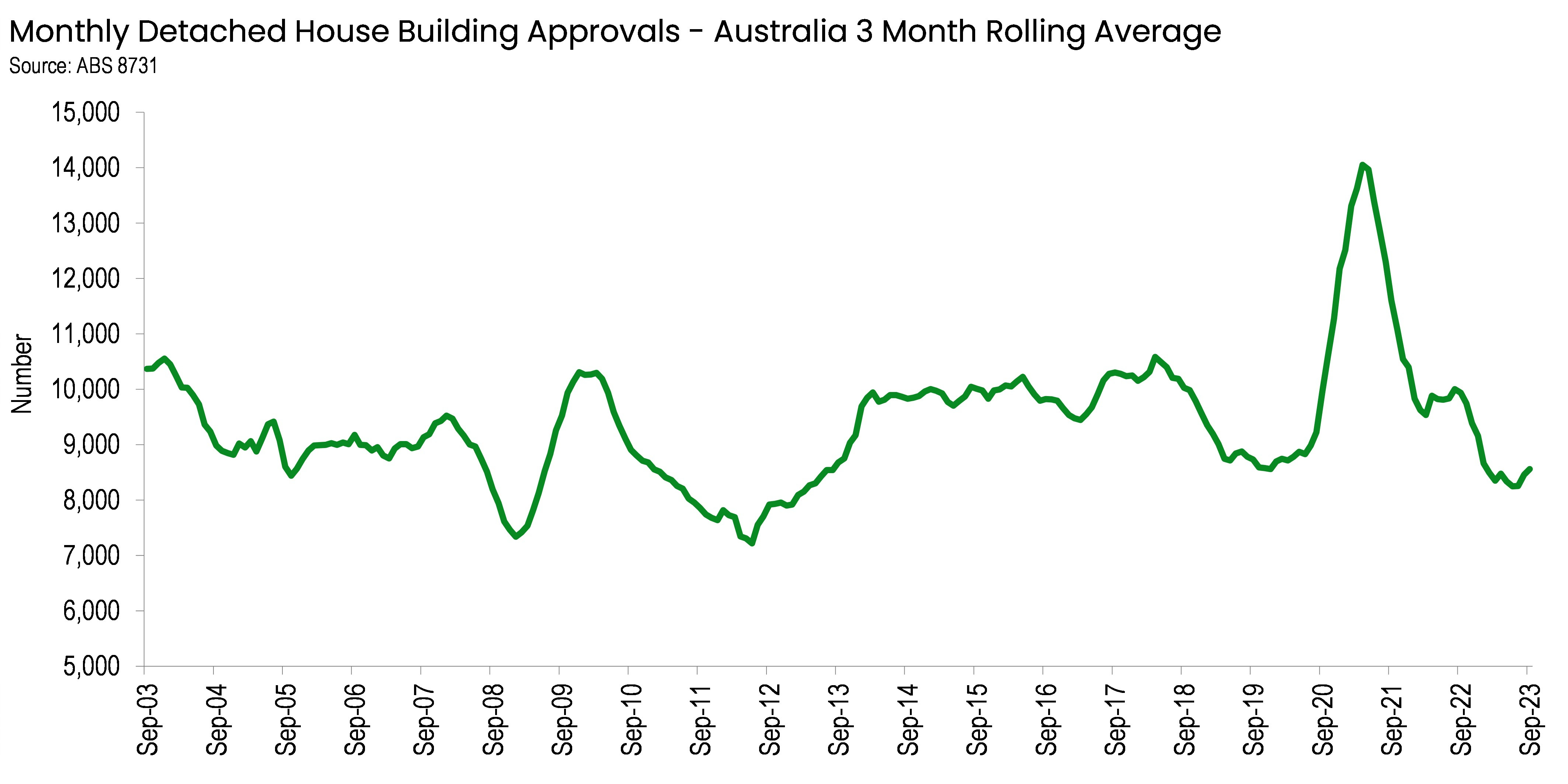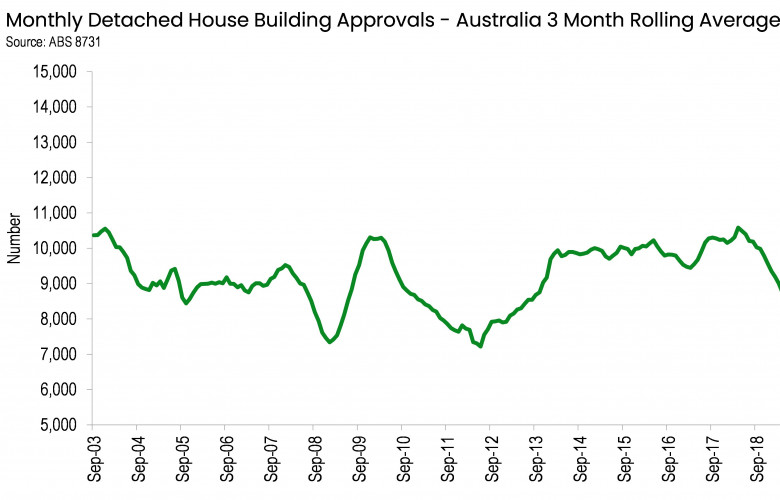House approvals fall under the weight of rate hikes - HIA
Contact
House approvals fall under the weight of rate hikes - HIA
“The volume of new house approvals remains around its lowest level in a decade as the full impact of RBA rate hikes continues to hurt households,” stated Tom Devitt, HIA Senior Economist.
“The volume of new house approvals remains around its lowest level in a decade as the full impact of RBA rate hikes continues to hurt households,” stated Tom Devitt, HIA Senior Economist.
The Australian Bureau of Statistics today released its monthly building approvals data for September for detached houses and multi-units covering all states and territories.
“The number of new houses approved in September fell by 4.0 per cent for the month. This leaves approvals of new houses in the last three months 13.9 per cent lower than the same quarter last year,” added Mr Devitt.
“Building approvals continue to be weighed down by the fastest increase in interest rates in a generation.
“Commentators have suggested that the inflation figures released last week justify further rate hikes. This perspective fails to appreciate that leading indicators such as building approvals are only now starting to reflect last year’s rate hikes. Further declines are expected as the full impact of this year’s rate hikes flow through to households.
“These low approvals figures will produce a decade low volume of new housing starts in 2024 and it will be even longer before this slowing in activity emerges in lagged indicators such as unemployment and inflation.
“There are very long lags in this cycle due to the record high volume of building work that was in the pipeline when the RBA first raised rates in May 2022. The volume of houses under construction only started declining in the June quarter of 2023, and remains elevated, a year after the first increase in the cash rate.
“This large volume of building work has obscured the impact of these rate rises on the broader economy, especially unemployment, as the building industry employs over one million Australians.
“This slow down in the volume of approvals will make it increasingly difficult to reach the Australian government’s target of building 1.2 million new homes in five years,” concluded Mr Devitt.
In seasonally adjusted terms, decreases in house approvals in September were led by Western Australia (-12.8 per cent), followed by Victoria (-9.3 per cent) and South Australia (-3.0 per cent). Increases were seen in Queensland (+1.2 per cent) and New South Wales (+0.9 per cent). In original terms, declines were also seen in the Australian Capital Territory (-11.8 per cent) and Tasmania (-2.4 per cent), while the Northern Territory increased by 56.0 per cent.






